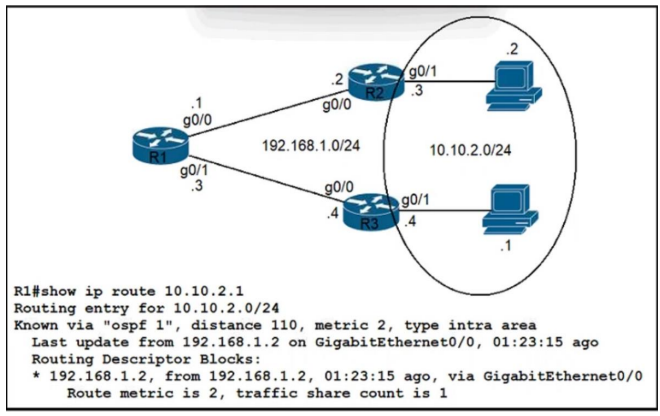


Refer to the exhibit. Traffic from R1 to the 10.10.2.0/24 subnet uses 192.168.1.2 as its next hop. A network engineer wants to update the R1 configuration so that traffic with destination 10.10 2.1 passes through router R3, and all other traffic to the 10.10.2.0/24 subnet passes through R2. Which command must be used?
EliasM
Highly Voted 2 years, 9 months ago[Removed]
1 year, 7 months agoOuaisLeSang
10 months, 2 weeks agoAbdullahMohammad251
1 year, 7 months agoGarfieldcat
Highly Voted 2 years, 9 months agoMinSun600
Most Recent 2 months, 3 weeks agoMinSun600
1 year agoEssohjay
12 months agoAbdullahMohammad251
1 year, 8 months agomsekmani
1 year, 9 months agoNICE_ANSWERS
2 years, 1 month ago[Removed]
2 years, 1 month agoTechJ
2 years, 1 month agodropspablo
2 years, 2 months agodanny43213
2 years, 5 months agoalejandro12
2 years, 8 months agoxbololi
2 years agoIAmAlwaysWrongOnExamtopics
2 years, 7 months agoGarfieldcat
2 years, 9 months ago